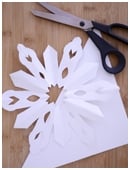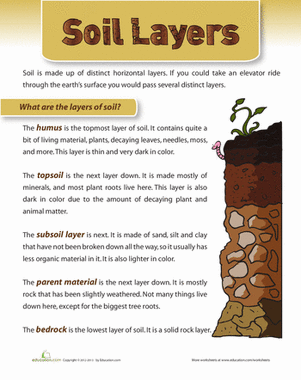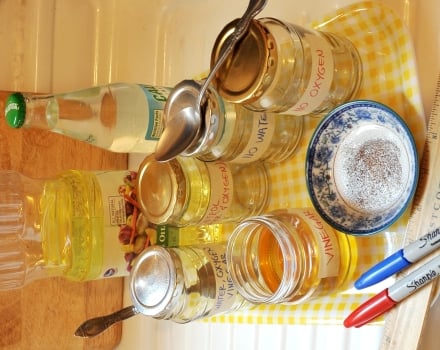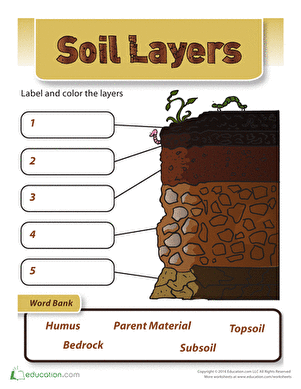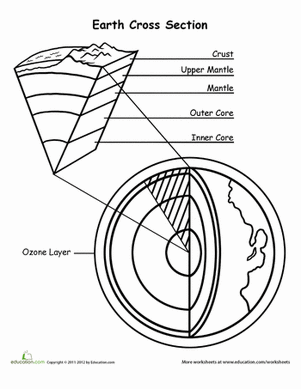Science project
How do Sedimentary Layers Form?
This project shows one way that sedimentary layers are formed as sediments (mud and silt, sand, pebbles and rocks, other materials) settle over time.
Problem:
How do sedimentary layers form?
Materials:
- Empty two-liter bottle with cap
- Bunch of different types of mud, dirt, sand, and pebbles
- Water
- Ruler
- Piece of paper and a pencil
Procedure:
- Go out and gather a handful or two of as many different types of dirt, mud, sand, and pebbles as you can find, putting them in the bottle as you go to create your own 'sedimentary layers.' Try collecting some clay and pebbles from a creek if possible, and/or some sand from the beach, and/or some soil from a garden, and so on. The idea is to get as many different types of sediment as possible.
- When the bottle is about 1/3 full, take it home, fill it the rest of the way with water, and close it tightly with the cap.
- Give the bottle a good shaking until everything inside is completely mixed up.
- Set the bottle somewhere where there’s good light and it won’t be disturbed.
- Look at the water every minute or so. Notice what’s happening. How clear is the water? What’s sinking? Is anything floating? What’s different compared to the last time you looked?
- After about 15 minutes, everything should be pretty well settled. (Wait a little longer if you need to.) Look closely at the sediments that have settled at the bottom of the bottle. Are they still all jumbled up like they were when they were suspended in the water? Or have they separated themselves into layers? How many distinct layers have you got? What fell to the bottom? What settled next, and after that? What’s at the top? How are the lower layers different from the higher ones?
- On your piece of paper, draw a picture of the layers in the bottle, and next to each layer, write what it’s made out of -- pebbles? sand? mud?
- Use the ruler to measure the thickness of the layers in the bottle, and write the results next to the drawing of each layer.
Disclaimer and Safety Precautions
Education.com provides the Science Fair Project Ideas for informational purposes only. Education.com does not make any guarantee or representation regarding the Science Fair Project Ideas and is not responsible or liable for any loss or damage, directly or indirectly, caused by your use of such information. By accessing the Science Fair Project Ideas, you waive and renounce any claims against Education.com that arise thereof. In addition, your access to Education.com's website and Science Fair Project Ideas is covered by Education.com's Privacy Policy and site Terms of Use, which include limitations on Education.com's liability.
Warning is hereby given that not all Project Ideas are appropriate for all individuals or in all circumstances. Implementation of any Science Project Idea should be undertaken only in appropriate settings and with appropriate parental or other supervision. Reading and following the safety precautions of all materials used in a project is the sole responsibility of each individual. For further information, consult your state's handbook of Science Safety.
Education.com provides the Science Fair Project Ideas for informational purposes only. Education.com does not make any guarantee or representation regarding the Science Fair Project Ideas and is not responsible or liable for any loss or damage, directly or indirectly, caused by your use of such information. By accessing the Science Fair Project Ideas, you waive and renounce any claims against Education.com that arise thereof. In addition, your access to Education.com's website and Science Fair Project Ideas is covered by Education.com's Privacy Policy and site Terms of Use, which include limitations on Education.com's liability.
Warning is hereby given that not all Project Ideas are appropriate for all individuals or in all circumstances. Implementation of any Science Project Idea should be undertaken only in appropriate settings and with appropriate parental or other supervision. Reading and following the safety precautions of all materials used in a project is the sole responsibility of each individual. For further information, consult your state's handbook of Science Safety.

